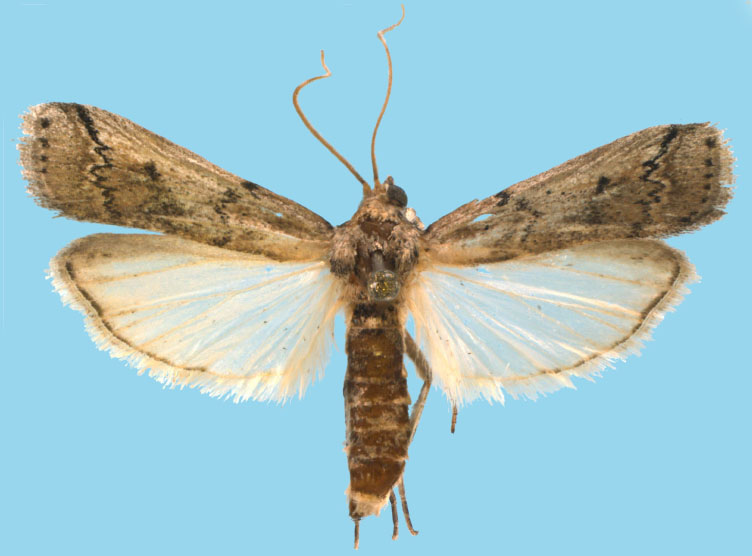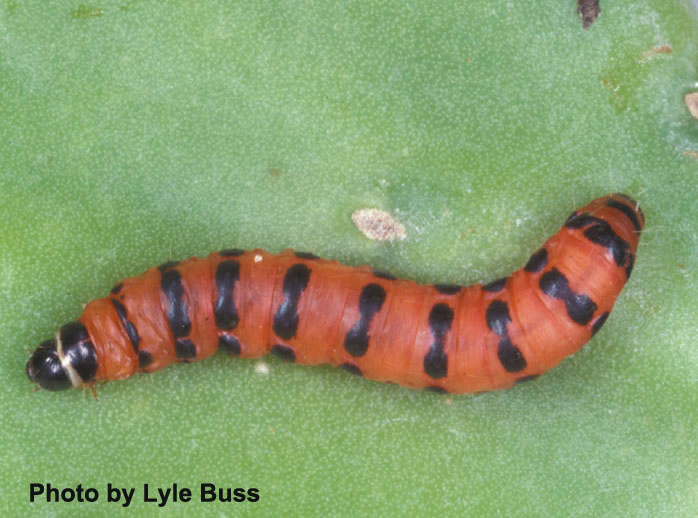Cactoblastis cactorum (Berg)
Synonymy and Types
Zophodia cactorum Berg, 1885, Anales Soc. Cient. Argentina 19: 276. Type locality: Argentina. Type deposition (unknown).
Cactoblastis cactorum, Ragonot, 1901, Mém. sur les Lépid., 8: 15.
Diagnosis
Cactoblastis cactorum has a similar wing pattern to some species of Melitara, however this species be distinguished by having a simple antenna in contrast to the bipectinate antenna in both sexes of Melitara. In the male genitalia, the gnathos is shallowly cleft dorsally and not cleft ventrally in C. cactorum, whereas the gnathos is more deeply cleft dorsally and also cleft ventrally in males of Melitara. The female genitalia of C. cactorum differs from those of Melitara by having a signum in the corpus bursae comgined with a posterior origin of the ductus seminalis near the juncture with the ductus bursae. Larvae of Cactoblastis are red and black, in contrast to coloration of the larvae of Melitara. Other differences between C. cactorum and M. prodenialis can be seen with the comparison of the structures of the exo- and endosketon given below.
Identification Guide
English (download pdf)
Spanish (download pdf)
Distribution
History of Biological Control
Videos
Dissection of Male Genitalia (2009)
Dissection of Female Genitalia (2011)
Morphology Images
Adult
Morphological Comparisons of Melitara prodenialis and Cactoblastis cactorum
Head
Prothorax
Mesothorax
Metathorax
Abdomen
Female papillae anales
Larva
Comparison of Larval Sensilla on Mouthparts of Cactoblastis cactorum and Melitara prodenialis.
Powerpoint presentations
Montesbravo, E. P. 2002. Some considerations about Cactoblastis cactorum in Cuba and its impact. Cactus Moth (Cactablastis cactorum) Consultants Meeting, International Atomic Energy Agency (IAEA). Vienna, Austria.
Soberon, J. 2002. The routes of invasion of Cactoblastis cactorum. NAPPO PRA Symposium. Puerto Vallarta, Mexico.



